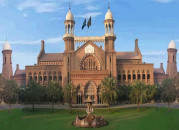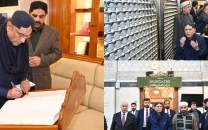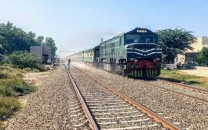DVDs to save Pashto cinema stars

But instead of making feature films, directors are working on telefilms that will be distributed to cinemas on DVD. The idea has sparked interest from investors in Afghanistan as well, where Pashto films made in Pakistan are quite popular. They have produced 10 films so far that will be distributed to cinemas.
Film critics believe that in the past decade, Pashto films superseded Punjabi and Urdu films in terms of their quality and commercial success. This is why directors have been able to attract actors from Urdu and Punjabi films to work in Pashto productions.
But there may be a sign of hope for fans and producers of Pashto films. The idea of making telefilms has gained credence in Peshawar, with filmmakers completing all the technical requirements for their ventures.
Prominent filmmaker Akbar Afridi told The Daily Express, “On the basis of popularity and business, Pashto films are ‘number one’ in Pakistan and Afghanistan.” “In the past, one good Pashto film would cost Rs50 million to make and would be shown at cinemas throughout the province,” Afridi said. “Now, due to an increase in cost, a good film now costs up to Rs70 million to Rs80 million. It does not make sense to produce a film at such a high cost which will screen in just eight to 10 cinemas, since there is no return on investment. To avoid financial losses, directors and producers are making low-budget telefilms, which also include six to seven songs.”
“In Afghanistan, the screening of these films has been extremely successful and Afghan investors and directors are also producing films here. One telefilm costs far less to make than a feature film and promises more profit.” Afridi said that given the economic situation the idea that the Pashto film industry has adopted is very promising. He added that when filmmakers travel to Lahore to use production facilities in the city, they provide employment and work for employees of Lahore’s abandoned film studios.
Cinemas in NWFP due to the security situation, and the fact that cinemas have been threatened and bombed, several cinemas have been closed in Peshawar and Mardan as well as in Kohat, Bannu, Swat and Nowshera. Existing cinemas are being sold to make space for commercial ventures. Peshawar’s most popular cinema, Shabistan, was sold recently.
Shabistan will be torn down to meet the fate of several cinemas across Pakistan - a shopping mall will be built there instead. Prominent cinemas in Peshawar include Naz, Firdous, Capital, Sabrina, Arshad, Tasveer Mahal, Picture House and the Pakistan Air Force cinema.
The number of cinemas in the city has declined considerably over the past few years. The Landsowne cinema, which was built in Peshawar in 1934, was torn down in 2007. In April 2009, the Frontier Post painted a despondent picture of the facilities in Peshawar’s few cinemas.
“The buildings are ramshackle and need proper renovation work, the seating arrangement is poor and the movies shown in them are even worse.” The Post quoted a senior citizen of Peshawar saying, “Most of the cinemas in Pakistan were constructed pre-Partition. We used to visit the cinema houses and the quality of the films was much better than what has been produced today.”



















COMMENTS
Comments are moderated and generally will be posted if they are on-topic and not abusive.
For more information, please see our Comments FAQ